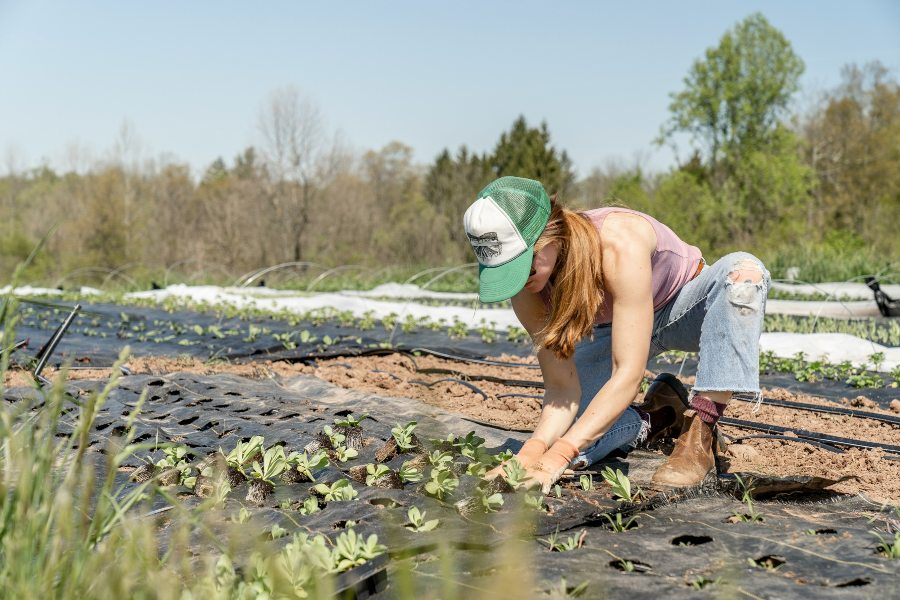Organic gardening is a rewarding and healthy way to cultivate your own fruits and vegetables without the use of harmful chemicals. By adopting organic practices, you not only ensure that your produce is fresh and nutritious but also contribute positively to the environment. Here is a comprehensive guide to help you start your organic gardening journey.
Choose the Right Location
The first step in organic gardening is selecting an appropriate location for your garden. Look for a spot that receives at least six to eight hours of sunlight daily, as most fruits and vegetables thrive in sunny conditions. Ensure the area has good drainage and is easily accessible for watering and maintenance.
Prepare the Soil
Healthy soil is the cornerstone of a successful organic garden. Start by testing your soil to determine its pH level and nutrient content. You can acquire a soil testing kit from a local garden center or contact your local extension office for assistance. Once you know your soil’s characteristics, you can amend it with organic matter such as compost, aged manure, and leaf mold to improve its structure and fertility.
Adding organic matter enhances soil aeration, water retention, and microbial activity, creating an ideal environment for plant growth. Be sure to avoid synthetic fertilizers and pesticides, as they can harm beneficial organisms and degrade soil quality over time.
Select Suitable Plants
When it comes to selecting plants for your organic garden, it’s essential to choose varieties that are well-suited to your climate and soil conditions. Native plants and heirloom varieties are excellent choices as they are often more resilient and less prone to pests and diseases. Additionally, consider planting companion plants, which can provide natural pest control and improve crop yields.
For example, marigolds can deter aphids and nematodes, while basil can attract pollinators and repel flies and mosquitoes. By planting a diverse range of crops, you create a balanced ecosystem that supports healthy plant growth.
Practice Crop Rotation
Crop rotation is a vital practice in organic gardening that involves changing the location of plant families within your garden each growing season. This technique helps prevent the buildup of soil-borne diseases and pests, as well as maintaining soil fertility.
For instance, follow a legume crop such as beans or peas, which fix nitrogen in the soil, with a heavy feeder like tomatoes or corn that requires high nitrogen levels. This natural balance reduces the need for external inputs and supports sustainable gardening practices.
Water Wisely
Efficient water management is crucial in organic gardening. Rather than soaking your plants with frequent, shallow watering, opt for deep, infrequent watering to encourage strong root development. Use a soaker hose or drip irrigation system to deliver water directly to the soil, minimizing evaporation and reducing the risk of fungal diseases.
Mulching is another excellent way to conserve moisture. Apply a layer of organic mulch such as straw, grass clippings, or shredded leaves around your plants to retain soil moisture, suppress weeds, and improve soil structure as it decomposes.
Manage Pests and Diseases Naturally
Integrated Pest Management (IPM) is a holistic approach to dealing with garden pests and diseases without resorting to chemical solutions. It involves monitoring your garden regularly, identifying problems early, and using a combination of cultural, mechanical, biological, and, when necessary, organic control methods.
Introduce beneficial insects like ladybugs, lacewings, and predatory wasps that prey on common pests. Encourage birds and frogs by providing water sources and shelter. Hand-pick pests off your plants, use insecticidal soaps, or apply neem oil to control outbreaks. Crop rotation, proper spacing, and maintaining healthy soil also play a significant role in preventing disease.
Fertilize Organically
To keep your plants healthy and productive, provide them with natural nutrients. Compost is one of the best organic fertilizers, offering a balanced mix of nutrients and improving soil health. Other organic fertilizers include fish emulsion, seaweed extract, and bone meal.
Apply these amendments according to the specific needs of your plants and soil test results, and avoid over-fertilizing, which can lead to nutrient imbalances and environmental damage.
Harvest and Enjoy
One of the most satisfying aspects of organic gardening is reaping the rewards of your hard work. Harvest your fruits and vegetables when they reach peak ripeness for the best flavor and nutrition. Regular harvesting encourages plants to produce more, ensuring a continuous supply of fresh produce throughout the growing season.
Organic gardening is not just a method of growing fruits and vegetables; it’s a lifestyle that emphasizes sustainability, health, and a connection to nature. By following these organic gardening practices, you can enjoy bountiful harvests while protecting the environment and promoting biodiversity.
If you’re looking for more tips and tricks on organic gardening, you can visit many gardening websites including The Green House Nursery, where you can find a wealth of resources and support to help you succeed in your gardening endeavors.







